Driving the 2.2L Petrol Automatic
The 2.2L mHawk petrol makes 138 BHP @ 4,500 rpm and 320 Nm of torque @ 2,000-3,000 rpm. It shares the engine block with the diesel. The power output is lesser than expected of such a large turbo-petrol; it is adequate though, even if there are 7 occupants onboard:

A note before starting the engine post - we've driven the petrol variant only on Mahindra's test track @ Chakan, MH. We drove it for just under 2 hours; that's enough for initial impressions, but don't treat this as a full-fledged engine review.
The same 6-speed AT (
imported from Japan's Aisin Seiki) of the XUV500 Diesel has been used here. No fancy dual-clutch tech - it's a conventional torque-converter unit and, I must say, superbly mated to the petrol. We'd commented on similar lines in our XUV500 Diesel AT review as well, and it's obvious that Mahindra has been polishing up its AT-tuning skills.
The engine starts off in 'P' & 'N' only (no body shake while starting). Try pressing the start button in any other gear position and the motor won't fire, with no display prompt coming up on the MID telling you to switch to 'P' or 'N'! A missing safety feature = the brake pedal doesn't need to be pressed to fire up the SUV, although you do need to press the pedal to move the lever out of 'Park'. Not applicable to 'N' though - in fact, you can freely slide the gear lever between 'N' & 'D' even at 60 km/h (remember, there's no unlock button on the gear lever)!
Take your foot off the brake pedal and the XUV500 AT will crawl forward at a speed of ~7 km/h. This crawling is useful as you can conveniently drive in bumper-to-bumper traffic with just one pedal (the brake). As is the case with torque converter ATs, accelerating off from a standstill is smooth & seamless. Throttle response is good and, thanks to the 320 Nm of torque (just 10 Nm less than the diesel), there is no sluggishness felt. This driveability makes it practical. Move calmly with a light foot in the city and you'll notice that the conservative gearbox is eager to move up; these early shifts keep engine noise to a bare minimum in the city. The upshift quality is very smooth too - it's devoid of any jerkiness and the change in engine note is the only hint of a gear change. Throttle response is satisfactory even on the move and you'll easily make your way around the city.
Press the A-pedal hard in the initial lot of gears and you'll experience healthy acceleration. It's not a revv-happy motor though - in fact, by petrol standards, it's not revv-happy at all! Further, keep the accelerator pinned and she'll change gears at just ~4,500 rpm. No matter what we tried, we weren't able to take the rev counter over 4,800 rpm. That's similar to the XUV500
Diesel and makes this the lowest revving petrol we've driven in India.
The Petrol AT is effortless to drive in most situations. The AT accelerates clean to 120 km/h and could drive at three digit speeds all day long on the expressway. The tall 6th gear ratio makes for relaxed mile munching - 100 km/h is seen at merely 1,700 rpm and 120 km/h at ~2,000 rpm (identical to its diesel AT sibling). This calm cruisability, along with the composed ride quality + high-speed stability + cruise control, makes the XUV500 an excellent highway companion (
fuel efficiency aside). The kickdown response time while overtaking is acceptable as well. That said, on single-lane highways or in aggressive overtaking moves, its best to use M-mode & get to the right gear before you move out. Reason? Sometimes, the gearbox will drop one gear when you expect it to drop two. Plus, the petrol also makes peak torque at a higher rpm than the diesel, thus it can take a second or over before you get the move on.
To engage manual mode, you have to move the gear lever to the left and slide the toggle switch forward for upshifts / backward for downshifts. The shift button is too small & very unergonomic to operate. Due to the placement of the gear lever in manual mode with regard to the tall armrest, using the shifter toggle is quite wrist straining. Moving the entire gear lever up or down (like the Compass) or paddle-shifters would be a far better option. Good news is, the XUV500's AT does a good job in most conditions and you'll seldom need to use manual mode. The only two driving conditions are when you want additional engine braking or if you're overtaking on a two-lane highway. Note: hitting the manual mode toggle switch with the lever in 'D' yields no response - you have to shift the lever to the left. Once the purpose is fulfilled, be sure to slot the gear back into 'D' mode as there is no kickdown in "M" mode, and it will only upshift when the revs get too high. Basically, in "M" mode, the gearbox keeps waiting for your command. Lastly, unlike some other ATs we've driven, the car will not hold onto a gear at the redline in M mode (it'll upshift).
In terms of NVH, the XUV500 Petrol is superior to the diesel. The engine starts getting audible only after 3,000 rpm. It's still okay at 4,000 rpm, but post that, the motor gets gruff (unexpected from a petrol). In our test car, there was also some rattling noise from the front left side of the car (from the engine bay). What Mahindra has done is provide us the smooth, drivable nature of the diesel minus the noise & inherent vibrations of an oil-burner. That said, by petrol engine standards, the NVH is average. It's no Honda or Hyundai.
A good thing that Mahindra has improved the XUV500's brakes over the years. After all, the AT needs competent braking hardware. The all-round disc brakes offer sufficient stopping performance with no nervous moments. Although, like the MT variant, nosedive under braking is present. In all other areas of on-road behaviour (ride quality, handling etc.), the XUV500 AT is just as talented as its MT sibling.
One major downside (and the biggest for most people) will be the petrol's fuel-efficiency. Simply put, it will be a petrol guzzler; Mahindra hasn't even shared its ARAI rating

. The big engine, hefty kerb weight and torque converter AT will together ensure that FE remains in the single digits. We expect it to give anywhere between 6 - 7 kmpl in the city (5 if you have a happy right foot).
IMHO, if you
absolutely must have a petrol, then go for this engine. If not, pick the very competent diesel instead. The diesel is quick, more economical, you get a wider variant choice and it will enjoy far stronger resale. Big, petrol UVs have always tanked in the used market and it takes a lot of time finding a buyer as well.
Full bonnet cladding for the petrol too!

The bay looks neat & tidy, thanks in no small part to the engine cover. All the openings and reservoir caps are well marked:
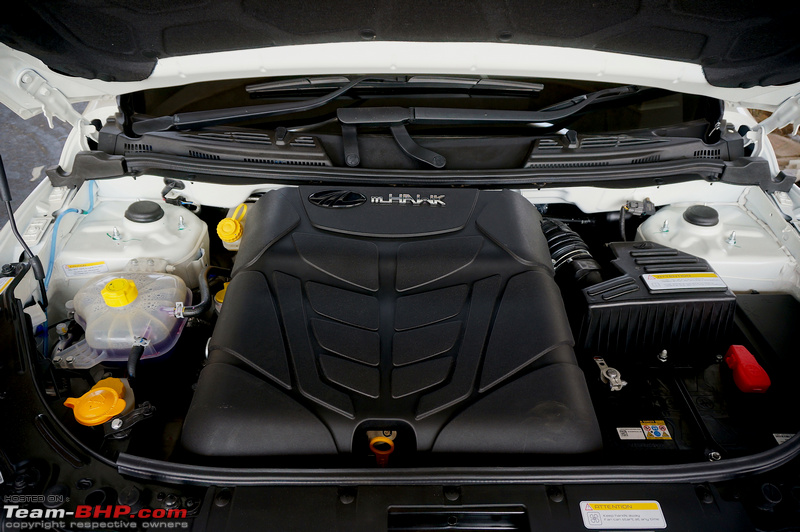
Engine cover gets a muscular
8-pack design (
inspired from this?):
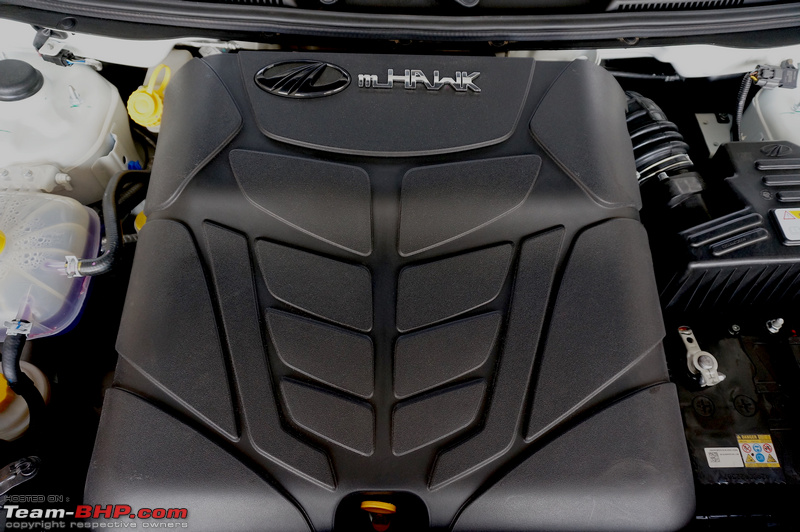
A look at things without the cover. It comes off easily:
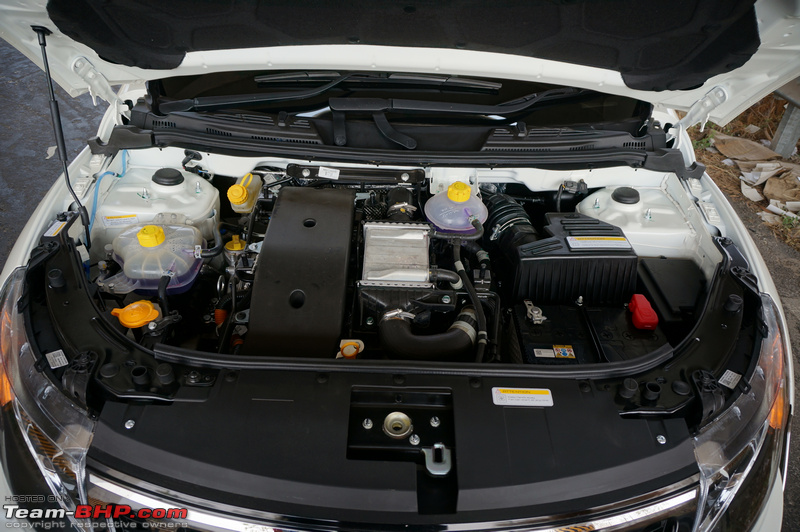
Very uniquely, it gets a liquid-cooled intercooler! The XUV500 Petrol is one of those rare turbo petrols to get such a setup in India:
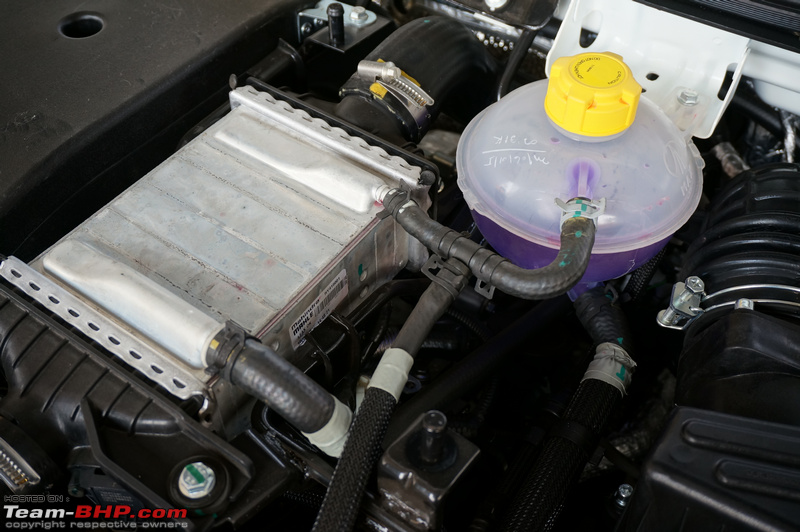
The intercooler has a separate coolant reservoir!
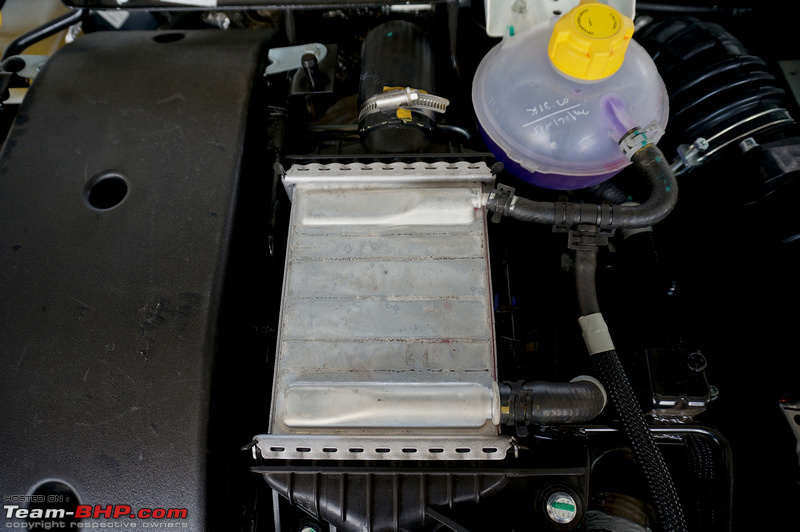
Turbo sits behind the engine - close to the firewall:
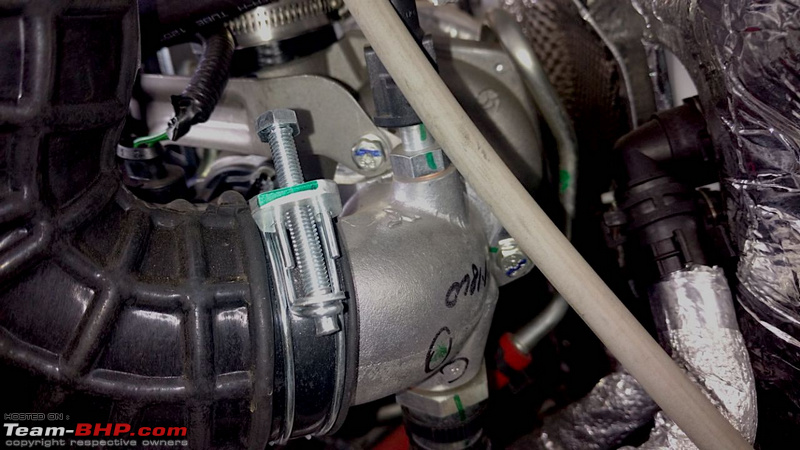
Healthy firewall insulation:

Another unique placement - the ECU is located in front of the battery (toward the face of the car). It's usually tucked in somewhere behind:

Fuse box opens up to reveal well-marked fuses and a picker to pull them out if needed (white piece on top):
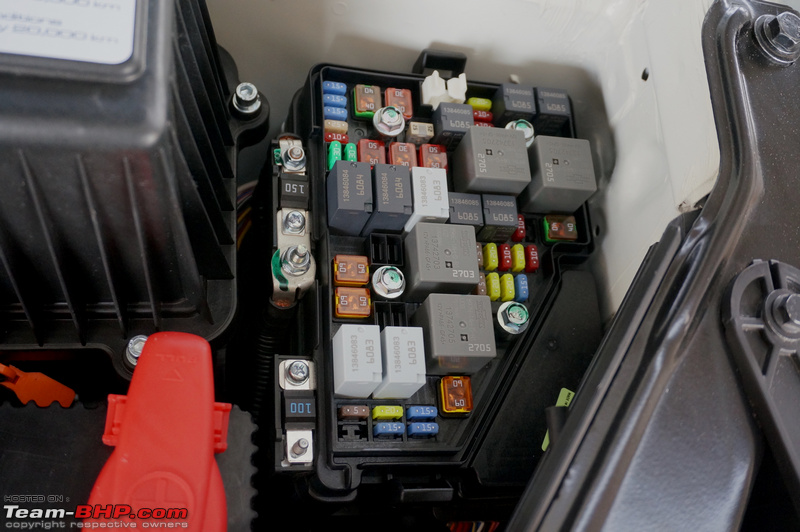
 (23)
Thanks
(23)
Thanks
 (11)
Thanks
(11)
Thanks
 (20)
Thanks
(20)
Thanks
 (19)
Thanks
(19)
Thanks
 (23)
Thanks
(23)
Thanks
 (29)
Thanks
(29)
Thanks

 (20)
Thanks
(20)
Thanks
 (4)
Thanks
(4)
Thanks
 (2)
Thanks
(2)
Thanks
 (2)
Thanks
(2)
Thanks
 (1)
Thanks
(1)
Thanks
 (3)
Thanks
(3)
Thanks
 (2)
Thanks
(2)
Thanks
 (1)
Thanks
(1)
Thanks




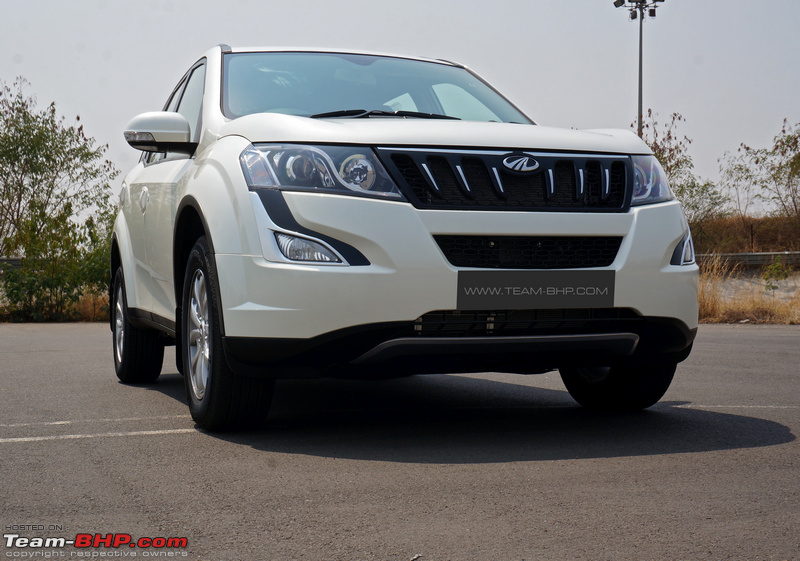
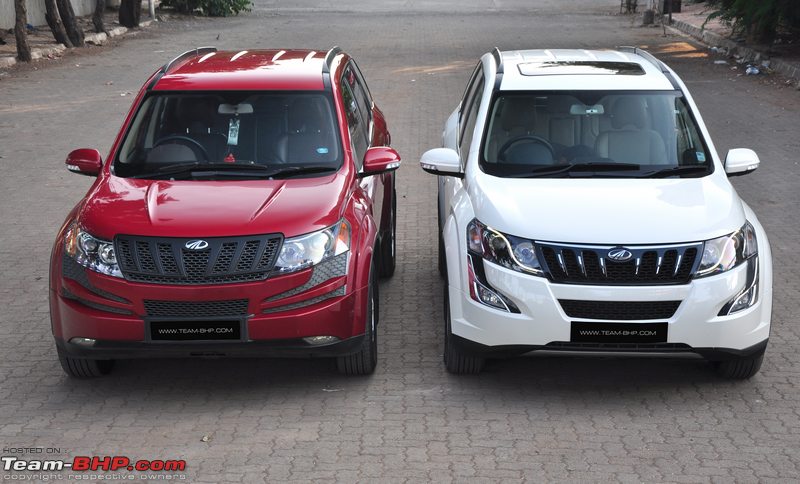
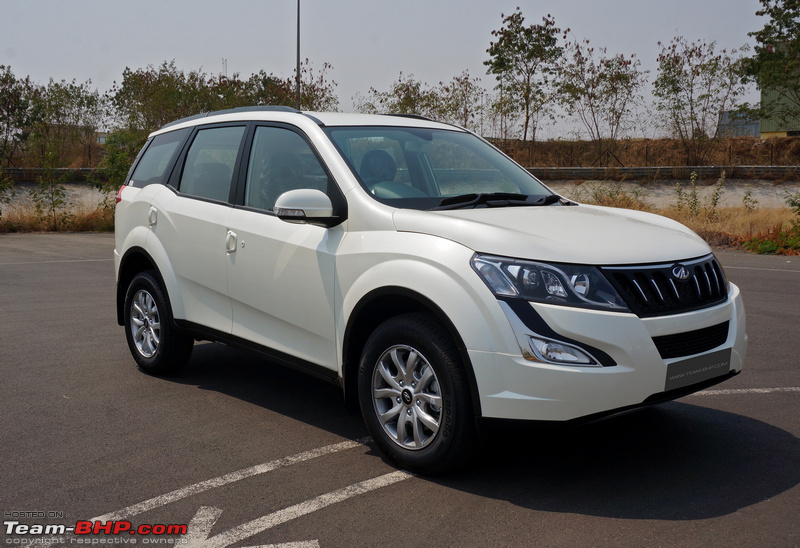

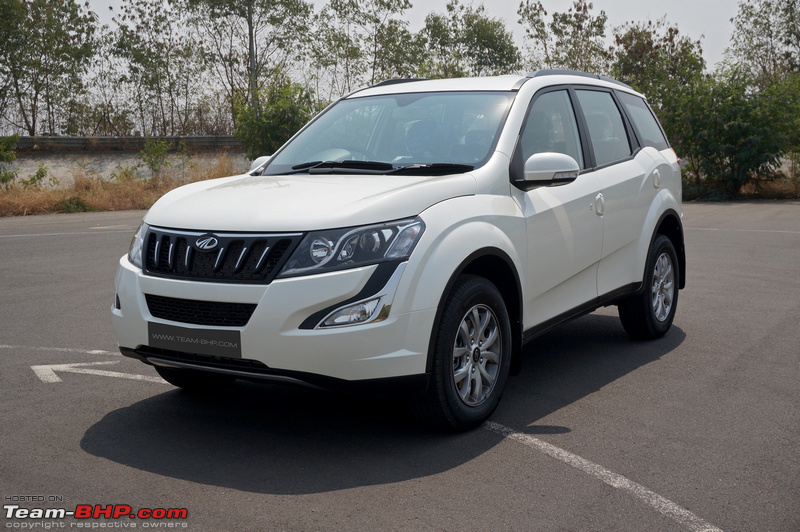
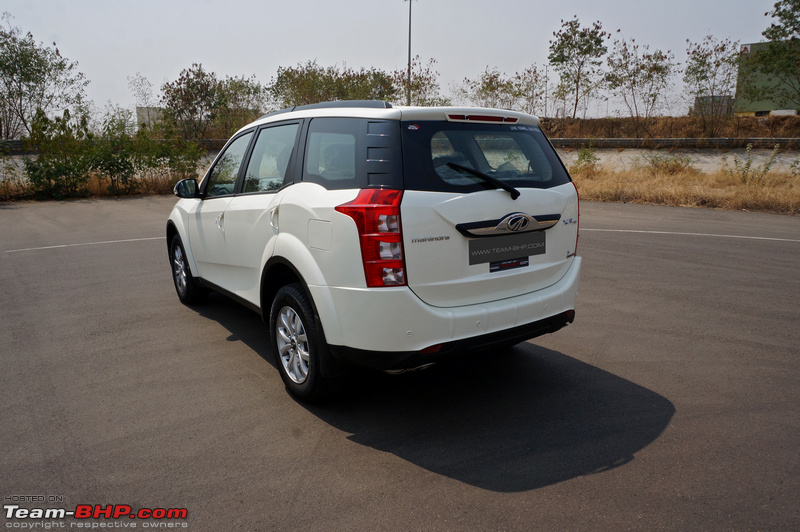
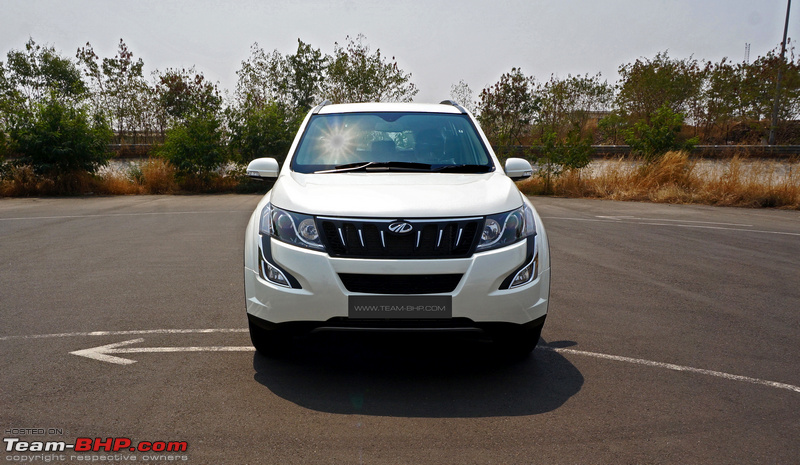
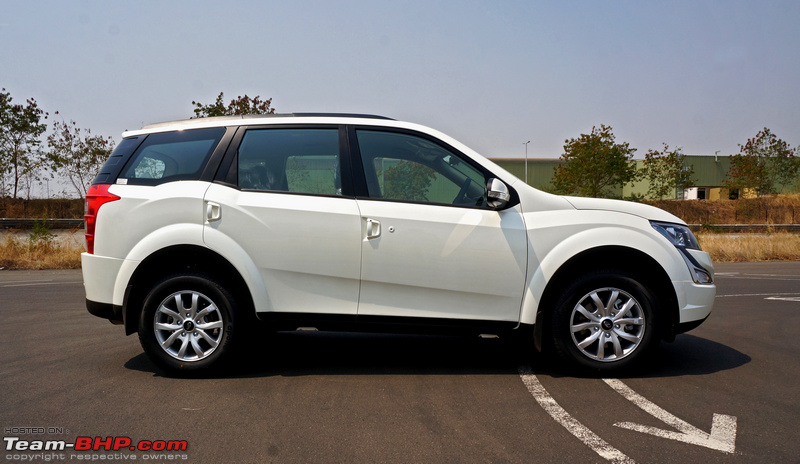

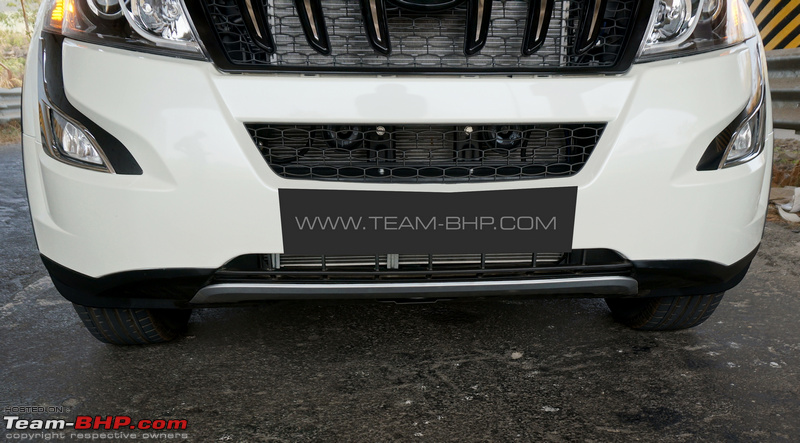
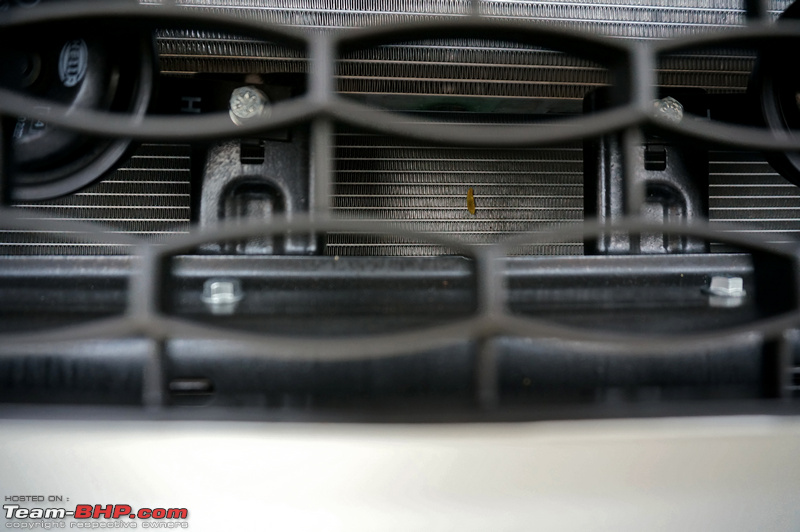
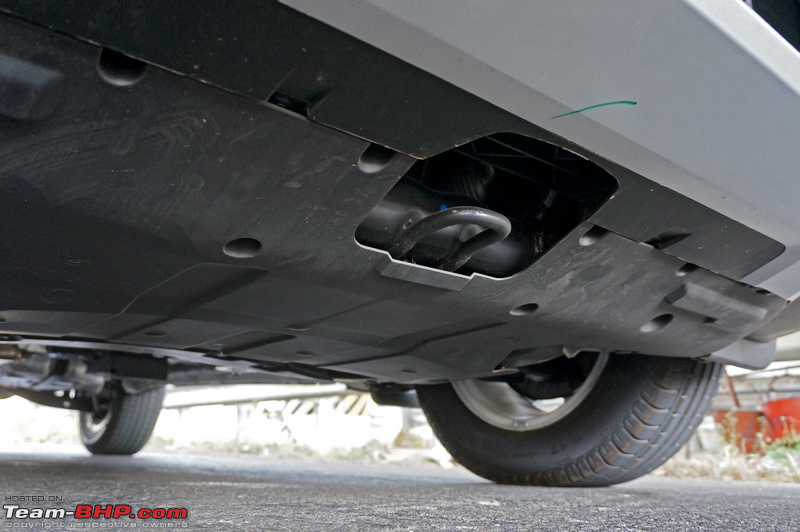
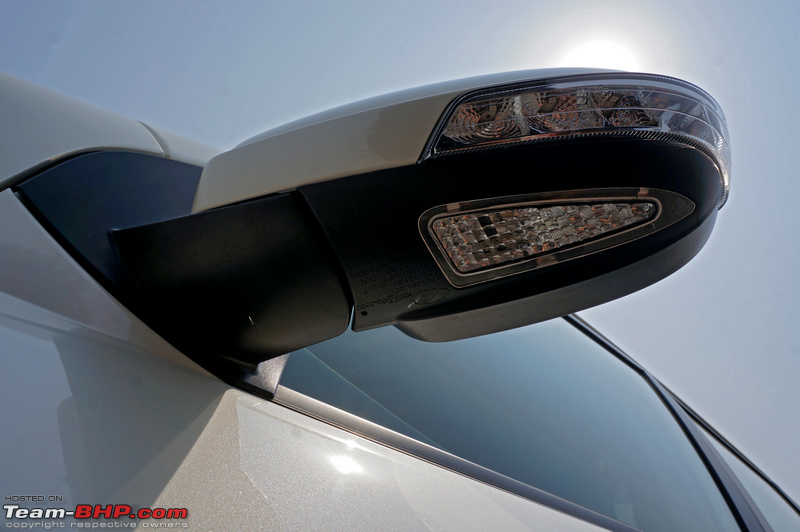
 ), everything else is the same:
), everything else is the same: 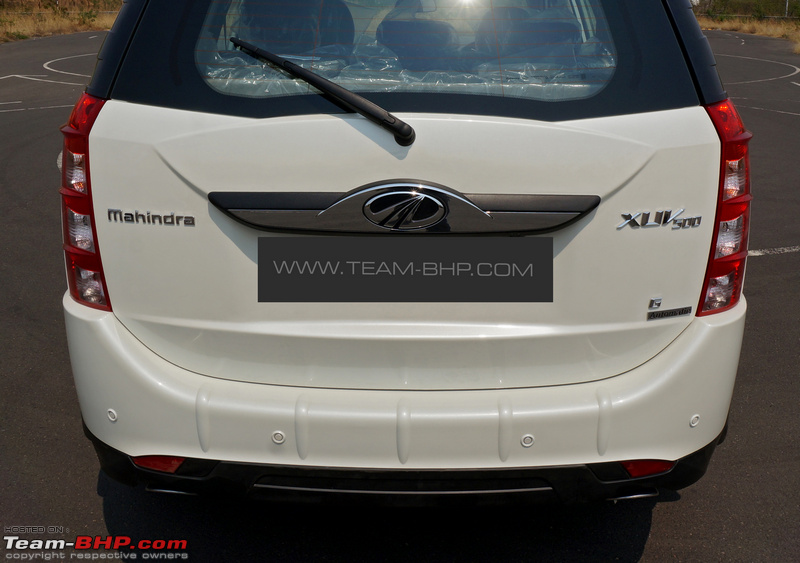
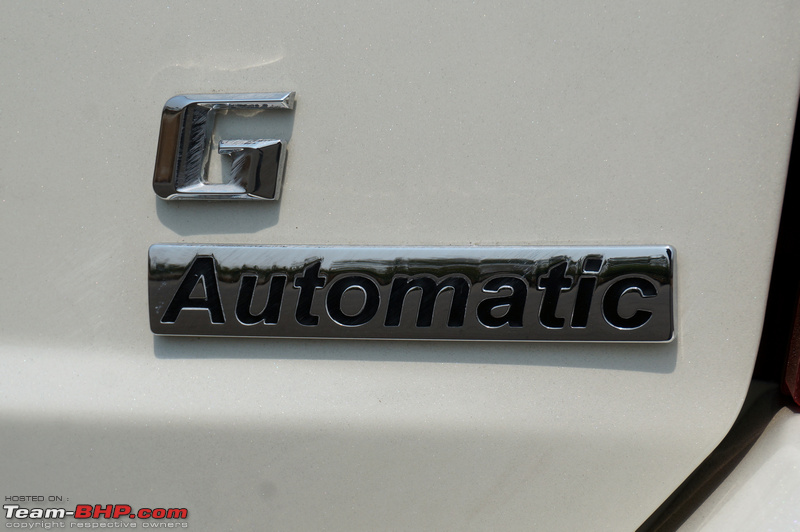
 Especially when there is only one petrol model in the line-up. In a large SUV, the rear view camera is a must for easier as well as safer parking. Far cheaper hatchbacks get a reversing camera as standard today!
Especially when there is only one petrol model in the line-up. In a large SUV, the rear view camera is a must for easier as well as safer parking. Far cheaper hatchbacks get a reversing camera as standard today!



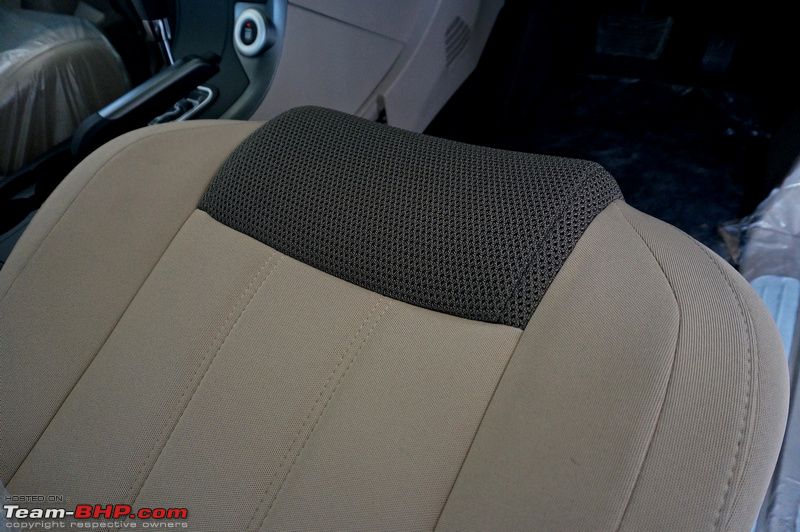



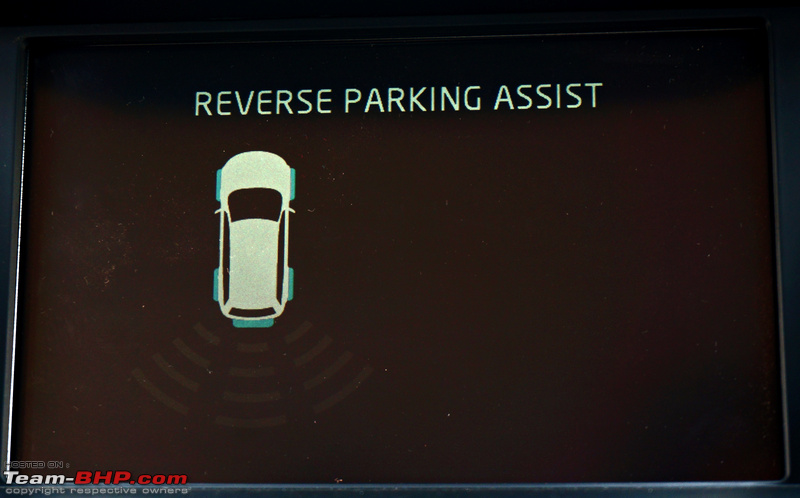
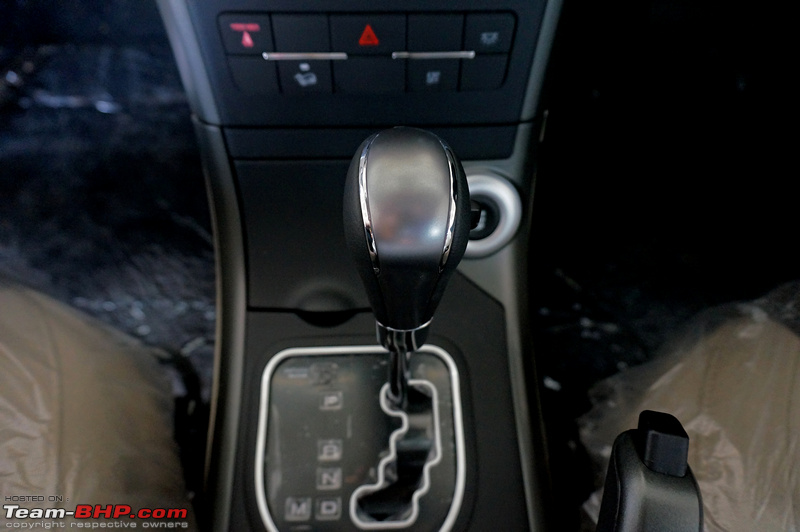
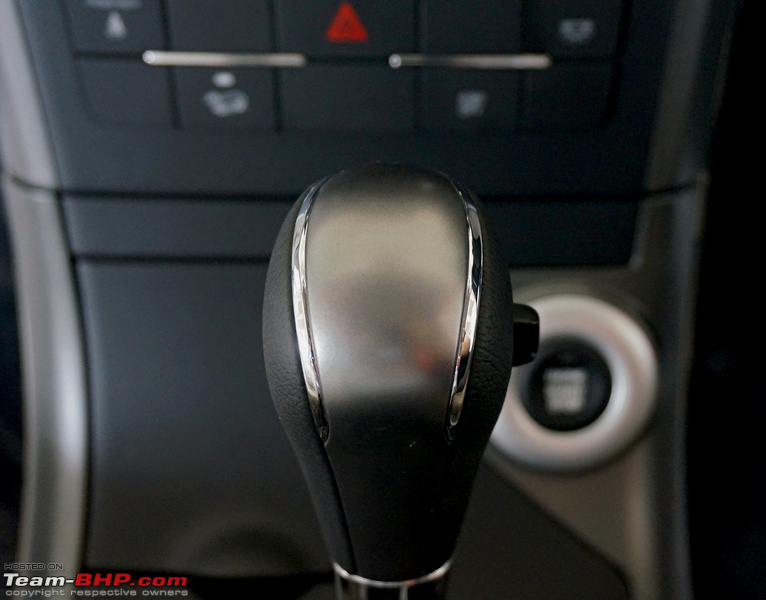


 . The big engine, hefty kerb weight and torque converter AT will together ensure that FE remains in the single digits. We expect it to give anywhere between 6 - 7 kmpl in the city (5 if you have a happy right foot).
. The big engine, hefty kerb weight and torque converter AT will together ensure that FE remains in the single digits. We expect it to give anywhere between 6 - 7 kmpl in the city (5 if you have a happy right foot). 









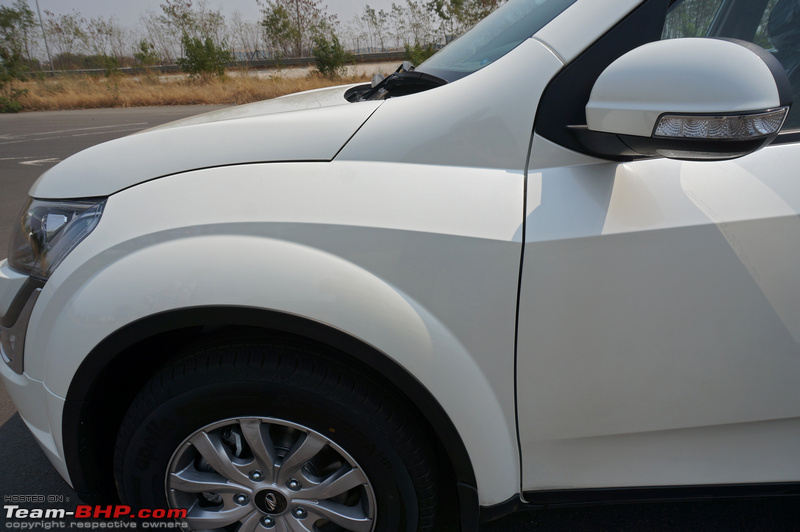
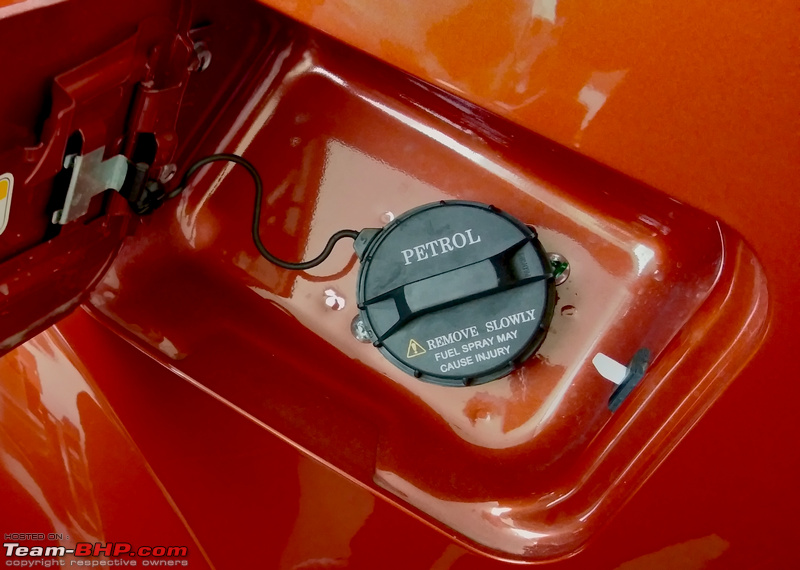
 .
. 
